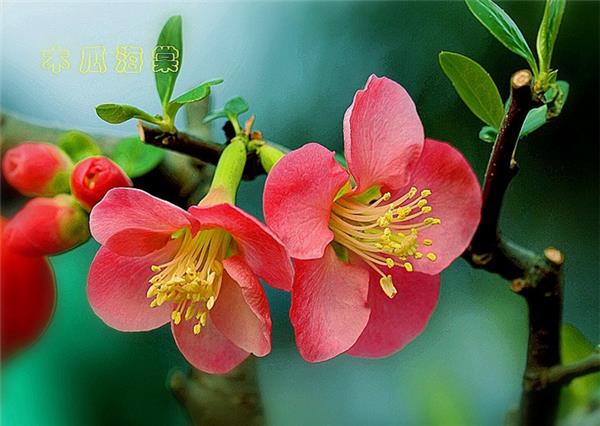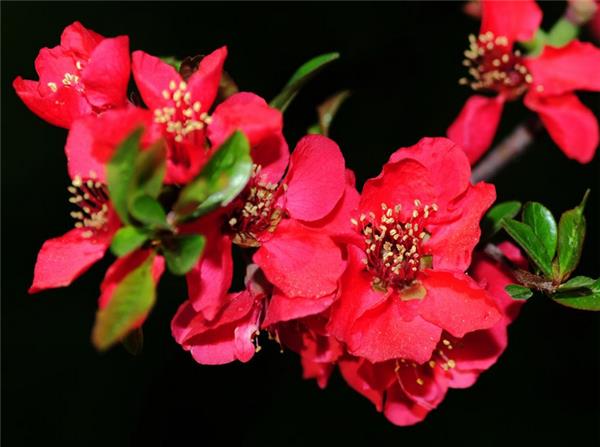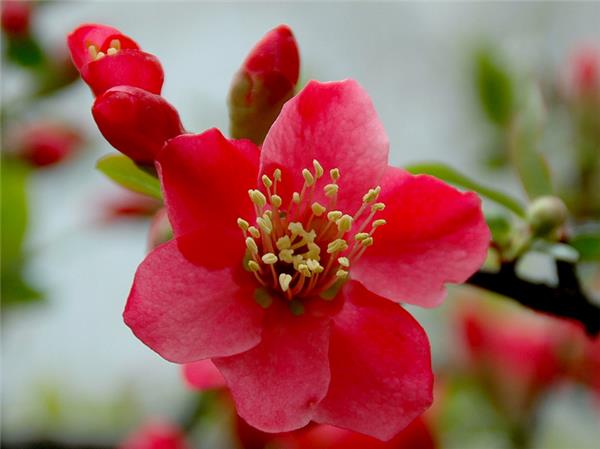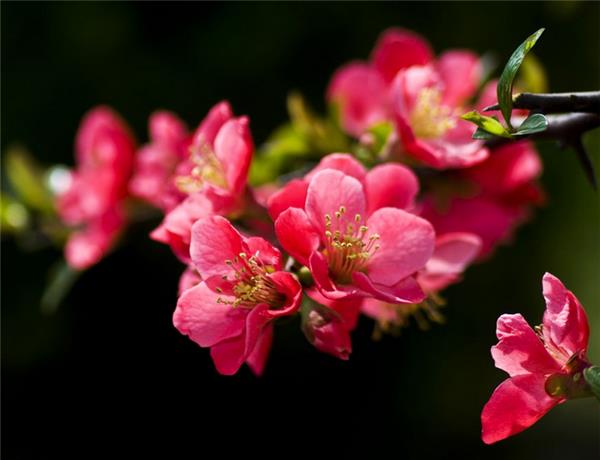Propagation method of papaya Begonia
There are many varieties of papaya crabapple, and the gorgeous flowers in spring are full of branches, giving people the feeling of blooming flowers. Today we are going to explain the breeding method of papaya begonia. Let's have a look!

Propagation method of papaya Begonia
1. Sowing: it is mostly used for varieties such as papaya and begonia with high fruit setting rate. After the late autumn fruit is ripe, peel off the seed coat, remove the pulp, take out the seeds and store them in sand. Sowing in March the following year, the seeds can be soaked in warm water before sowing to promote seed germination. The seedling bed can be prepared with 2 parts of mature sawdust and 3 parts of yellow sandy soil. After sowing, cover 2 cm of soil, cover with plastic film, then keep the soil moist, about 40 days after emergence, remove the plastic film after emergence, and apply mature thin liquid fertilizer when the seedling is 10 cm high. Do not divide the seedlings in that year, and then plant them in the ground in February and March of the second year. When the seedlings are 30 meters high, they will head and dry to promote more new branches, which can blossom after 2 to 3 years.
two。 Ramet: often used for tufted plants, usually in late autumn or early spring, by digging up the clustered mother plant from the soil for segmentation, each with 2 to 3 branches. It can also be dug up and planted next to the evil branches of the old plant, and it is easy to survive. The plants of ramets in late autumn should be pseudo-planted to promote wound healing and be planted in the following spring. The ramets in early spring can be planted directly.

3. Cuttings: there are two kinds of cuttings: hardwood cuttings and tender cuttings. No matter what kind of branch cuttings are used, in order to promote rooting, ABT rooting powder can be used to treat cuttings. The method is to mix ABT rooting powder into solution according to the description, soak the base of cuttings for 8 to 12 hours, and then soak the cuttings for 8 to 12 hours. In addition, root insertion can also be carried out. The suitable insertion medium is sand or vermiculite with good drainage.
The main results are as follows: (1) Hardwood cuttings are cut in the middle and last ten days of September to cut the sturdy and full woody branches of the same year as cuttings, and the sturdy annual branches can also be cut in late March. The cuttings are 0.5 to 1 cm thick, each section is about 15 cm long, inserted into half of the soil, watered once after insertion, and covered with plastic film to keep the soil moist. When the temperature is too high, the plastic film can be opened for ventilation. It took root about 40 days after insertion.
(2) the cuttings were inserted from May to August, and the sturdy and vigorous semi-lignified branches of the same year were cut on the young plants with strong growth and no diseases and insect pests. In order to avoid water evaporation, the cuttings can be cut in the early morning, the length of the cuttings is 10 to 15 meters, the lower leaves are cut off, the upper leaves are retained, and the lower incision should be close to the axillary buds. Pour water once after insertion to make the medium combine closely with the cuttings. In the future, spray can be used to increase air humidity and reduce temperature. Sunshade nets should be set up in the early stage of insertion to avoid strong direct sunlight to burn leaves or cause leaves to wilt. After rooting, the light should be increased appropriately to promote the leaves to produce nutrients through photosynthesis and make the seedlings grow healthily.
(3) the method of root insertion is combined with ramet to intercept strong thick roots, lay them flat in the soil, cover the soil, and seedlings will grow soon.

4. Striping: crawling begonia, often used for creeping growth, usually carried out in spring. The method is to cut the sturdy branches and press them into the soil, take root in 50 to 60 days, separate from the mother plant in autumn or the following spring, and plant separately.
5. Grafting: the seedlings and cuttings of common varieties of Tripterygium and Chaenomeles sinensis were used as rootstocks (we used the rootstocks made of papaya seedlings), and the branches of excellent varieties of begonia were used as scions to cut and split in spring and rely on grafting in the growing season. The grafting method can be carried out in accordance with the general woody plant grafting method.

Maintenance knowledge of papaya and begonia
Papaya begonia likes warmth and has a certain degree of cold resistance. The soil is required to be well drained and not resistant to moisture and salinity. The optimum temperature for growth was 25-32 ℃. When the temperature dropped to 10 ℃, the growth was inhibited, the young organs below 5 ℃ were damaged, the plants died when the temperature was 0 ℃, and when the temperature exceeded 35 ℃, a large number of flowers and fruits were dropped. Papaya Begonia needs a lot of water, but it avoids stagnant water and has wide adaptability to soil, but it requires loose soil, good air permeability and low groundwater level. It is suitable for planting in deep, fertile, loose and slightly acidic soil.
Related
- Wuhan Hospital Iron Tree Blooming Result Was Instantly Frightened by the Gardener Master
- Which variety of camellia is the most fragrant and best? Which one do you like best?
- What is the small blue coat, the breeding methods and matters needing attention of the succulent plant
- Dormancy time and maintenance management of succulent plants during dormancy
- Minas succulent how to raise, Minas succulent plant pictures
- What are the varieties of winter succulent plants
- How to raise succulent plants in twelve rolls? let's take a look at some experience of breeding twelve rolls.
- Attention should be paid to water control for succulent plants during dormant period (winter and summer)
- Watering experience of twelve rolls of succulent plants
- Techniques for fertilizing succulent plants. An article will let you know how to fertilize succulent plants.



